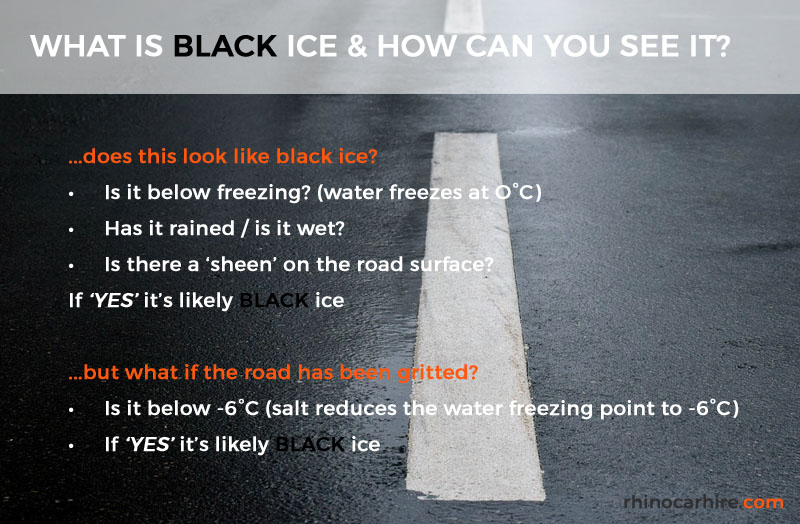Despite its name, black ice is not black, it’s much like any other ice you’ll encounter on the roads in that it is frozen water that is transparent and has no colour. However, unlike regular ice that forms on the roads in winter which often appears white in colour, black ice gets its name as its transparency makes its very presence almost impossible to see. Roads are generally black in colour (tarmac) and the transparency of this thin layer of ice gives the impression of being black in colour. Black ice is so dangerous to drivers as it appears to be just a wet road, however in certain climatic conditions it is in fact ice. Braking distances on wet roads are approximately double that of dry roads, but in icy conditions it can be up to 10x dry road conditions.

How Does Black Ice Form?
Most road surfaces are made of tarmac, small aggregates bound by a resin to form a smooth surface, however upon closer inspection the surface is not entirely smooth. Under normal conditions, this aids traction from car tyres as rain water can escape into the small undulations to keep the contact patch of car tyre and road as dry as possible and prevent aquaplaning. Black ice forms when these pools of water freeze. When water freezes it expands, so whilst when in liquid form, the water level is below the road surface, as it freezes it exceeds the height of the road surface and forms an ice layer over the contact patch of road and tyre. All the small undulations will join together and create an area of black ice. Or as we now know, a sheet of clear ice on top of a black tarmac road.
How Can You Spot Black Ice?
That’s why it is so dangerous as you can’t. However, you can use your knowledge to predict where it might be and drive accordingly. Ask yourself;

- Is it below freezing? (water freezes at O°C)
- Has it rained and is it wet?
- Is there a ‘sheen’ on the road surface?
If ‘YES’ it’s likely BLACK ice.
But what if the road has been gritted?
- Is it below -6°C (salt reduces the water freezing point to -6°C)
- Is there a ‘sheen’ on the road surface?
If ‘YES’ it’s likely BLACK ice.
Comments